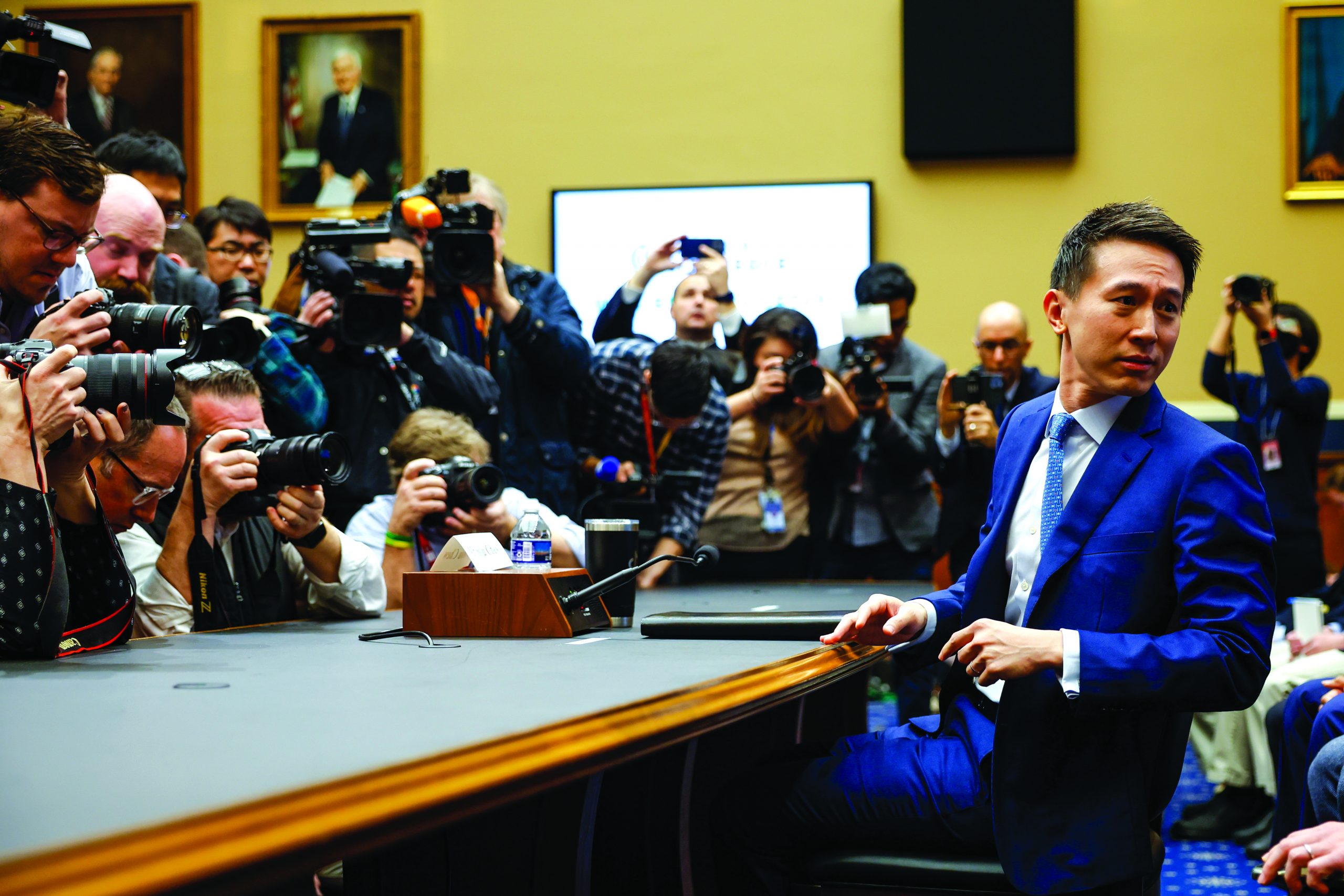Luckbox leans in with Stephanie Kelton
Stephanie Kelton is a rarity among scholars of economics. Instead of confining her ideas to a college lecture hall, she’s moved onto the world stage. Documentary filmmakers trail her. She has the ear of serious presidential candidates. Fans pack European arenas to hear her speak.
Kelton has emerged as the leading voice for Modern Monetary Theory, or MMT, the idea that governments that control their own currency can spend as much as they want—on everything from universal healthcare to universal employment.
Nations would reach the limit of their ability to spend only when they print so much money that it outstrips the country’s capacity to produce goods and services. The result of overdoing it would be inflation, but proponents of MMT would guard against that eventuality, Kelton says.
Their caution isn’t enough to sell MMT to everyone. Conservatives often reject the ideas out of hand, but even progressives can find them confounding. Paul Krugman, a political liberal and Nobel Prize winner in economics, says MMT is “indefensible,” co-founder of Microsoft Bill Gates calls it “crazy talk” and Larry Summers, an economist and former Harvard president, regards MMT as a “recipe for disaster.”
But Kelton’s advocacy for MMT is changing minds. She served as an economic advisor to Sen. Bernie Sanders’ 2016 presidential campaign, and former Vice President Joe Biden has named her to his economic task force. Her new book, The Deficit Myth: Modern Monetary Theory and the Birth of the People’s Economy, became an immediate New York Times best seller.
With her star rising as a public intellectual, Kelton granted some time to Luckbox, and the following conversation ensued.
The federal government has run a budget deficit for 76 of the last 89 years. The current debt exceeds $25 trillion, and legislators routinely ignore PAYGO (pay-as-you-go) rules. So, why debate budget deficits and the debt, particularly when interest rates are low?

There are a lot of reasons. Political theater is at the top of the list. Habit, lack of understanding, desire to use fear of debt and deficits to achieve other political ends … so there are some strategic reasons for doing it.
Inflation, a key concern among MMT’s detractors, has supposedly remained below 2% since the Great Recession. But, has it really? Over the past 20 years, the cost of higher education and healthcare have increased by multiples of somewhere between two to three times. Do you accept the Consumer Price Index as accurate?
There are different indices, and the goal is to capture the spending patterns of the typical household. So, if you’ve got three or four kids to put through college, that’s obviously a bigger share of the personal budget than somebody who doesn’t have any kids or whose kids don’t go to college or go to an inexpensive community college. So, the indices are not a good reflection of every individual, but they are meant to capture what’s generally happening to the prices of a basket of goods that the typical American consumer spends money on over time. Is it imperfect? Yes. Do I think that inflation has actually been 4% or 6% or something that we’re significantly underestimating? I don’t get worked up about mismeasurements of inflation. I don’t think they’re orders of magnitude off, but is it imperfect? Yes.
What inflation constraints exist with the application of MMT?
MMT isn’t something that you apply. It’s a lens—a description of how the modern monetary system works. And looking through that lens, you can see the real limits. So, the constraints are the same limits that exist whether we’re talking about government spending or any other form of spending in the economy. The economy has a capacity constraint—we only have so many people who are in the labor force and are available to be hired and put to work. We only have so many factories and machines. We only have the state of technology that exists today. So, those are our nation’s real resource constraints. But with those real resources, we can do a lot. Businesses can hire some of those resources and put them to work producing things in the economy. Government can hire some of those resources and put them to work. So, the question isn’t really about the limits on government spending alone. The question is on total spending in the economy, and that includes spending from the rest of the world.
The root answer to your question is that the limits are in our economy’s real productive capacity, our real resources, the things we have available today—labor, capital, technology. If we put too much strain on those resources, the punishment will be inflationary pressure.
What level of inflation becomes a red flag?
The central bank here and central banks around the world have chosen 2% as a target inflation rate above which they don’t want to see prices accelerate. MMT doesn’t take issue with that.
Would it follow that fiscal policy may become necessary to correct inflation rising beyond that level?
Around the world, central banks have been told that it’s their job to deliver 2% inflation and to make certain that it doesn’t run out of control. How do they do that? They change interest rates. That’s been the policy tool of central banks for decades. They raise and lower their overnight rate to fight inflation. So, can we continue to run policy that way? Sure. Does MMT think that’s a blunt instrument and the wrong policy tool to fight inflation? Yes. If central banks were so good at hitting their inflation targets using the interest rate then, surely, we wouldn’t have watched Japan struggle for almost 30 years to get inflation up to 2%.
[Former chair of the Federal Reserve] Ben Bernanke couldn’t do it for a decade trying everything. So, we have a problem in how we understand the workings and mechanics of inflation and what drives it. And we’ve had a lot of trouble starting it up when it’s been the explicit policy goal to push inflation higher. Central banks have failed to deliver on that. So, what do you do if inflation does go higher than 2%? Well, conventional policy would say keep raising interest rates. MMT would say that might have perverse effects. In other words, raising the interest rate means higher interest and consequently higher payments to bondholders. So, as interest rates go up, interest income goes up and people have more money to spend. You might actually cause inflation to accelerate by raising interest rates.
So, what about the other side, the fiscal policy side? Lots of things. And there’s more you could do on the monetary policy side, too. You could tell banks to target credit creation from private banks to slow down spending. We could tighten up credit requirements and capital requirements. So, on fiscal policy, if you think that inflation is the result of a general increase in aggregate demand—too much money chasing too few goods or too much spending outstripping the economy’s capacity—then you can cut government spending. You can try to cut private spending, which is what the Fed does by raising interest rates. You could raise taxes if you wanted to remove income from people so they would have less income to spend. There are a whole range of policy responses to inflationary pressures.
So under MMT, fiscal policy is not the only solution to rising inflation?
Definitely. You want to look under the hood. So, if you see the headline number go from 2% to 3%, you don’t just want to react with higher interest rates. For example, if it was accelerating healthcare costs, would anyone agree that the right policy to stop inflationary pressures to bring inflation back down to 2% is that the central bank should tighten interest rates? You’re going to slow housing starts and slow automobile sales to fight inflation driven by healthcare costs? You really have to identify the source of the inflationary pressure and then try to tailor policy to that. We used to be good at this. We did this in the ’40s and ’50s.
Where fiscal policy would be the recommended response, are there other constraints—such as a maximum tax burden?
No. While there are constraints on fiscal policy, the best defense against inflation is a good offense. I never heard a single soul mention inflation all my time working on the Hill. There was zero consideration of inflation because all they care about is getting some new spending bill, expanding an existing program, introducing a new program—whatever it takes to get it through the CBO (Congressional Budget Office) by making sure that it doesn’t add to the deficit. That’s the only consideration. And what MMT does is show us that that is the wrong way to go about approaching the federal budgeting process.
All they think of is, “How do I offset the spending so that I can convince CBO that it won’t increase the deficit?” So, you could easily imagine Congress authorizing a couple of trillion dollars in new spending on infrastructure and pairing it, let’s say, with a wealth tax so they write a bill. They say we’re going to spend $2 trillion on infrastructure, and we’re going to subtract $2 trillion from the hands of the wealthiest people in the country so that it is all “paid for” and it won’t add to the deficit. So, the CBO looks at a bill, and they say it’s great. It doesn’t add to the deficit. Lawmakers pass the bill. Now they’ve authorized $2 trillion of spending into the economy, which could be inflationary.
If you have an economy that’s already operating at full employment, and you spend $2 trillion, and your offset is a wealth tax—which is removing dollars from people who weren’t going to spend them in the first place—then you’ve done nothing to mitigate inflationary pressures as you spend a new $2 trillion into the economy. I think that no macro approach is more careful in centering inflation risk than MMT. It is the relevant limit and no other school of thought treats it that way.
To address unemployment, you speak of a jobs guarantee program as an “automatic stabilizer.” Why would that be preferable to targeted tax cuts?
Because tax cuts are just a carrot. It’s just an incentive that may or may not lead to additional job creation. If we aggressively cut taxes right now in this economic environment, maybe 20 million people are going to become permanently unemployed coming out of this pandemic. The calculation on the part of the businessman is, “If I part with my cash and spend money today by hiring and investing, I am not going to see profit. I can’t even fill my restaurant today. I have all this capacity.” So, what are tax cuts going to do? I am not anti-tax cut in the right economic environment. I’m just saying that there are a lot of events that have to happen to get you from the tax cut to the actual person on the other side who’s looking for a job. Whereas with a job guarantee, there are no “ifs.” If someone can’t find a job, then they get a job. You solve the problem immediately. That person has an income, they can now become a consumer, and they can create demand that will eventually move those people out of public-sector employment and back into the private sector.
Hyman Minsky, one of the most important economists of the last century, called the public sector the employer of last resort. In his mind, we had solved the problem of what happens in a liquidity crisis. We created the Federal Reserve to be a lender of last resort, so that when there was panic and a rush to liquidity some institution could stand ready to supply all of the liquidity that was needed to arrest the crisis. When there’s mass joblessness, the government could create an elastic demand for labor. You just hire anyone who walks in without a job and temporarily employ them until they transition back into private sector employment. And that’s why it works like an automatic stabilizer. So, the budget moves in the right direction in the right moment and takes those workers and keeps them employed and employable. Businesses don’t like to hire people who are long-term unemployed.
Is full exercise of monetary sovereignty a profound expansion of government policy that could enable a policy arms race?
Do you mean that if every policymaker woke up tomorrow and had a fuller appreciation or understanding of their fiscal capacity that they might build too many hospitals, fund too many schools, or fix bridges and infrastructure? I don’t know. I don’t know what the concern is that we would end up with better public services. MMT is agnostic with respect to how that fiscal space is used. I can give the MMT lenses to a conservative government and I can give the MMT lenses to a left-leaning government. So, some might say, “Oh, look, there’s lots of fiscal space, we can cut taxes.” OK, fine. You can use up the fiscal space that way. The other one might say, “We can do some spending on infrastructure or education or R&D.” Fine—use up your fiscal space like that.
We’re at a precipice with respect to monetary and fiscal policy as the economy reopens after the coronavirus shutdowns. What’s the biggest risk if the response is only another stimulus similar to the recent $2 trillion package?
It would be insufficient. The Congressional Budget Office has said that the U.S. economy is going to lose $16 trillion in nominal GDP over the next 10 years. It will be lost to us forever. Why? Because we aren’t going to have a robust economic recovery and operate at maximum capacity. Failing to run your economy at full employment carries costs, right? It’s lost output—stuff you didn’t produce, which is lost income, savings and wealth. If we just did what we did before, that means state and local governments are left out again, and that’s, that’s a very big concern. If you’ve got 50 little Herbert Hoovers working against the recovery by massively cutting spending at the state level, you’re going to have the federal government trying to step on the gas while governors and mayors are slashing budgets and applying the brakes. The car’s not going to move forward.
What’s the most compelling empirical evidence of how MMT would function in the medium or the long term?
Obviously, you don’t look to a country that doesn’t operate with a sovereign currency and say that’s how it would end up. If you’re Venezuela or Argentina, you’re borrowing and you’ve got mountains of U.S. dollar-denominated debt. You don’t get to have an MMT comparison because you don’t fit the criteria.
Japan has taught really interesting lessons because all the textbooks say that deficits drive up interest rates—all of them. Then you look at Japan, and it doesn’t work that way. The interest rate is a policy variable. Nobel Prize-winning economists and Harvard professors all say that if the debt increases there’s a tipping point that becomes unsustainable and inflationary, and it’s supposed to drive interest rates up. They get downgraded by the rating agencies. But Japanese government bonds were downgraded to a rating below Botswana. What happened? Nothing. The conventional narratives are all wrong. If anything, selling bonds to the private sector is more inflationary because of all the interest income.
Thank you, Stephanie. One final question. If you were not the primary advocate of MMT at this extraordinary moment in economic history, or perhaps not even an economist, what would you hope that you would be doing?
I love public policy. I like policymaking. I ran for office once. When I was a little girl my godmother was a state senator in California. In fact, she was the first woman ever elected to the State Senate in California. I have a sense of how important public policy decisions are to so many lives and how they shape the world and our communities. So, I might say public policy despite having been inside the Beltway and knowing how frustrating it is. I suppose I would trade places with Tina Turner … that would be better.






















